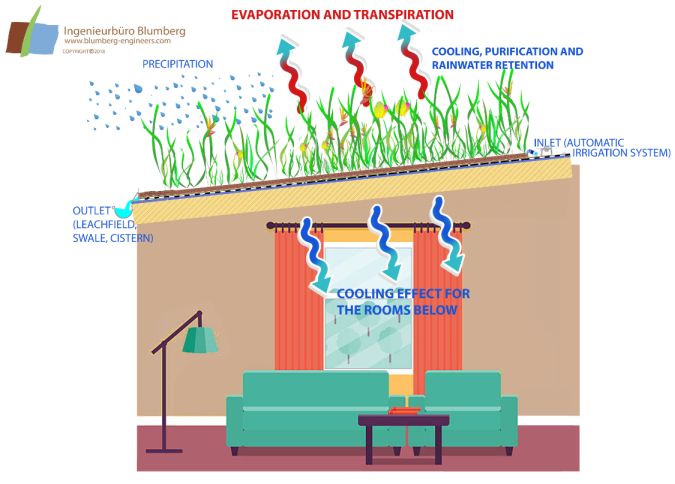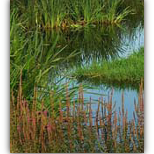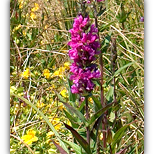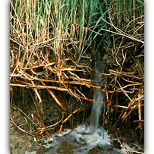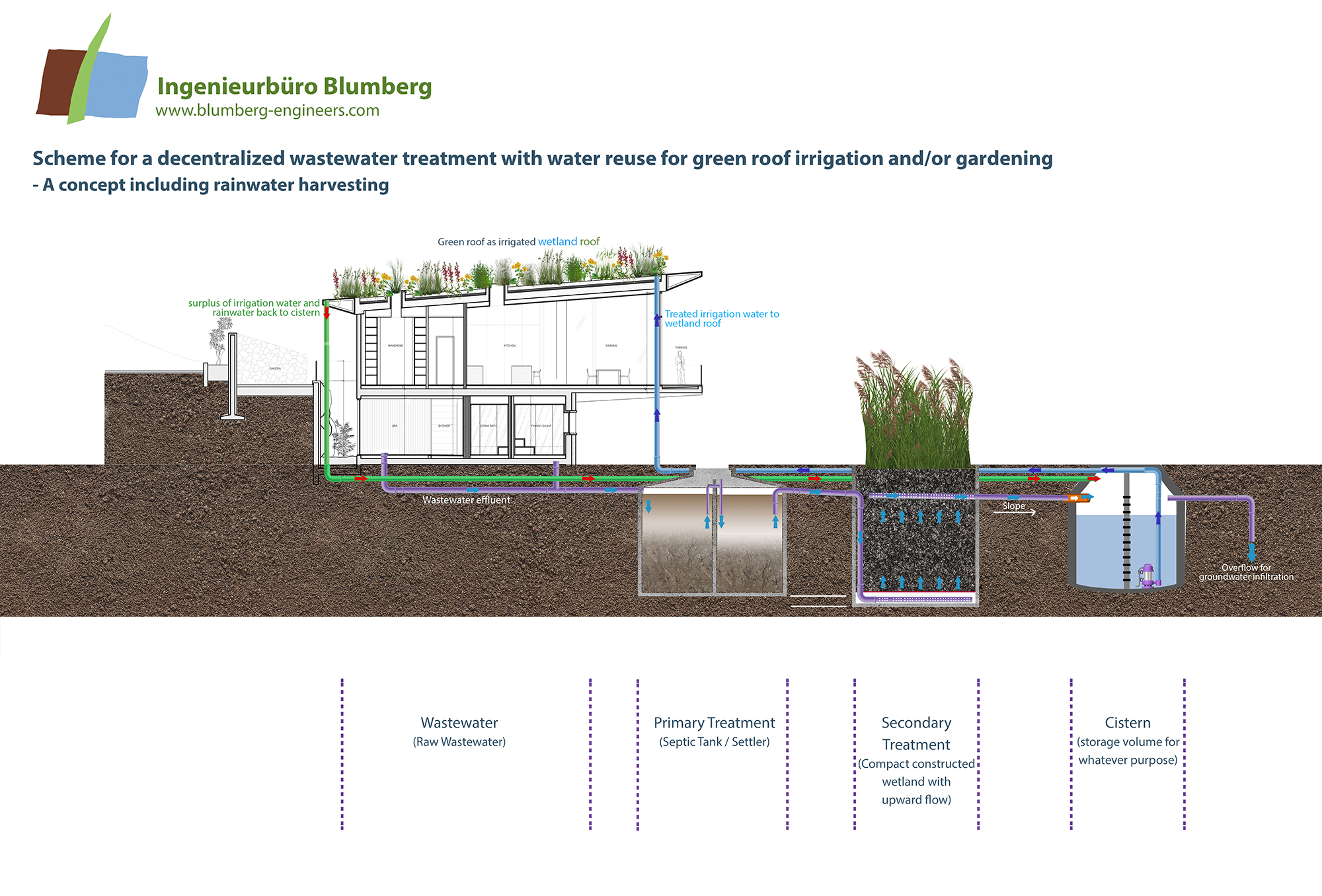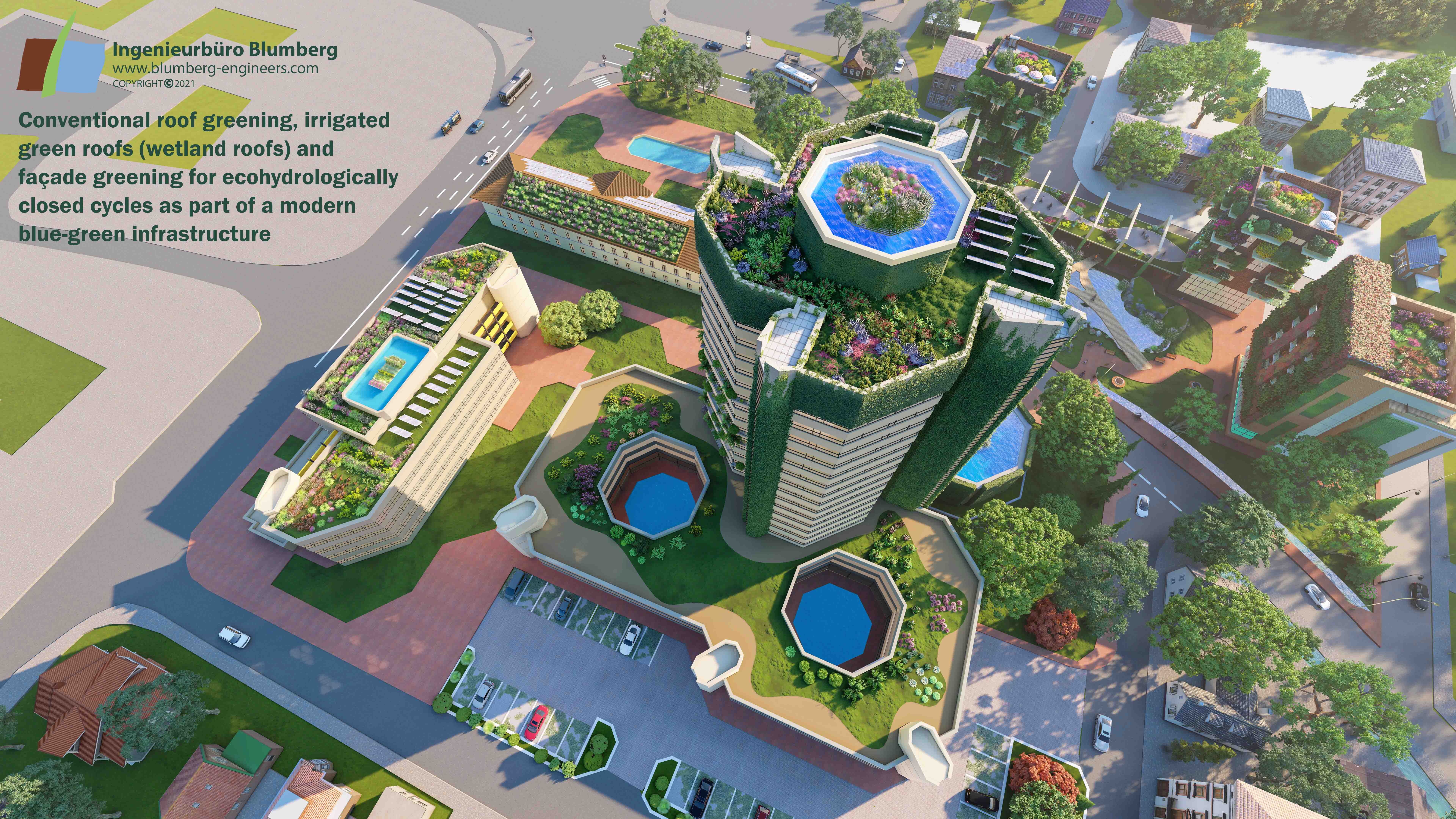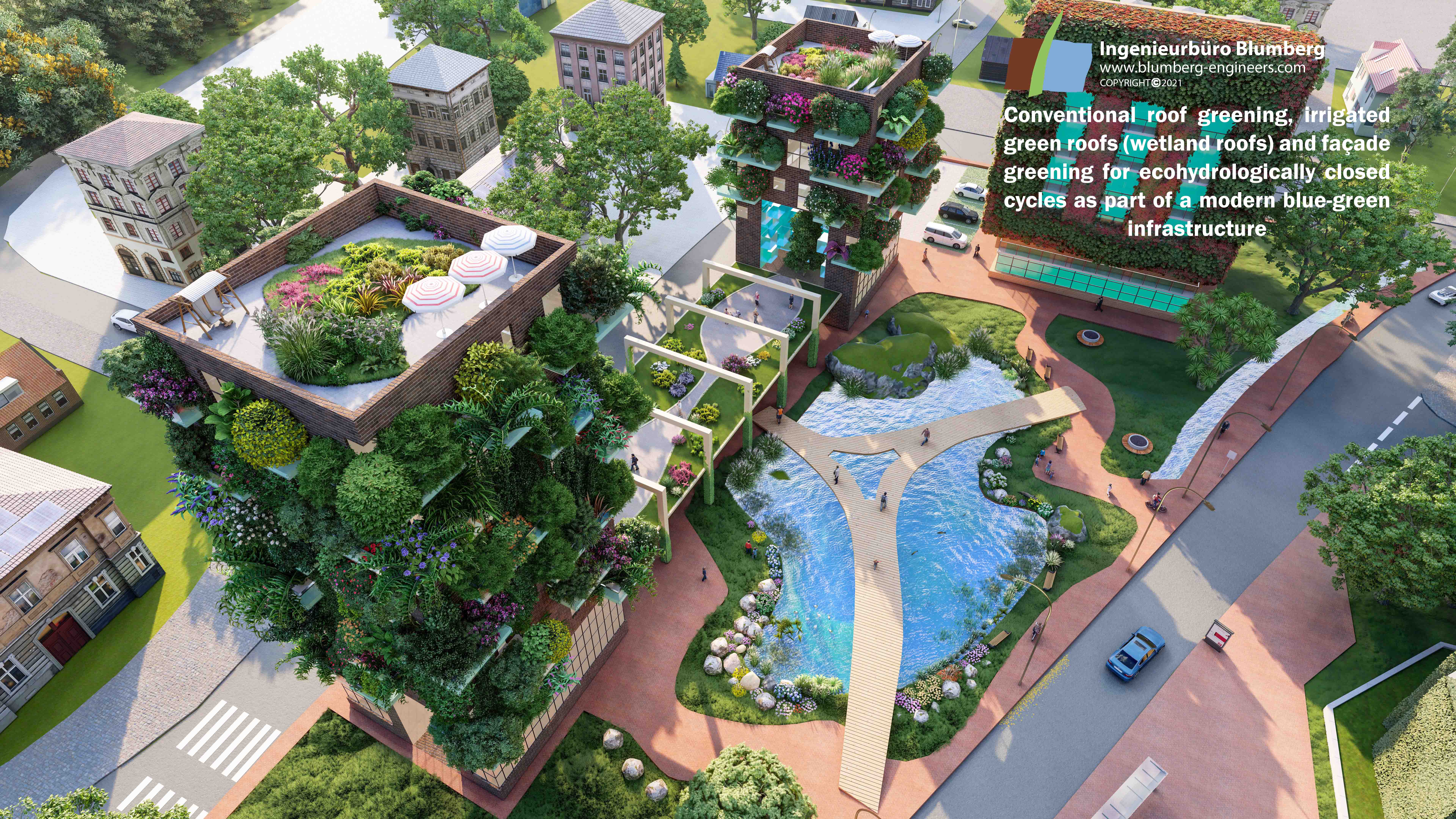Wetland roofs - irrigated greed roofs for ecologically closed cycles
The construction of a marsh plant roof improves the life style of one’s home. It combines aesthetics and functionality in a piece of nature, purifies wastewater and water and is used as natural air conditioning with a minimum of costs.
 Marsh plants are cultivated on textile
mats (fleece) and afterwards hauled on the roof. The shape and
incline of the roof (up to 30°) can vary. After the plant mats
are installed on roof, the vegetation will cover the whole area.
The effect on rainwater retention relieves the sewerage system.
Marsh plants are cultivated on textile
mats (fleece) and afterwards hauled on the roof. The shape and
incline of the roof (up to 30°) can vary. After the plant mats
are installed on roof, the vegetation will cover the whole area.
The effect on rainwater retention relieves the sewerage system.The roots of the plants absorb the nutrients of the water by using them for their growth. Marsh plants on roof are also able to filtrate suspended substances out of the air.
Marsh plants on roofs are not just used for the retention and purification of rainwater but also of various waste water types, for example municipal, commercial, agricultural and industrial waste water.
Another positive effect of wetland roofs is the protection of the roof skin against climatic extremes and sun radiation. Thus the lifetime of the roof will be prolonged.
Wetland roofs are a ‘natural air conditioning’, as the insulating effect and cooling by evapotranspiration of the plants are major advantages of this special green roof. This effect can be observed in the experimental station of the German Federal Agricultural Research Center in Braunschweig.
